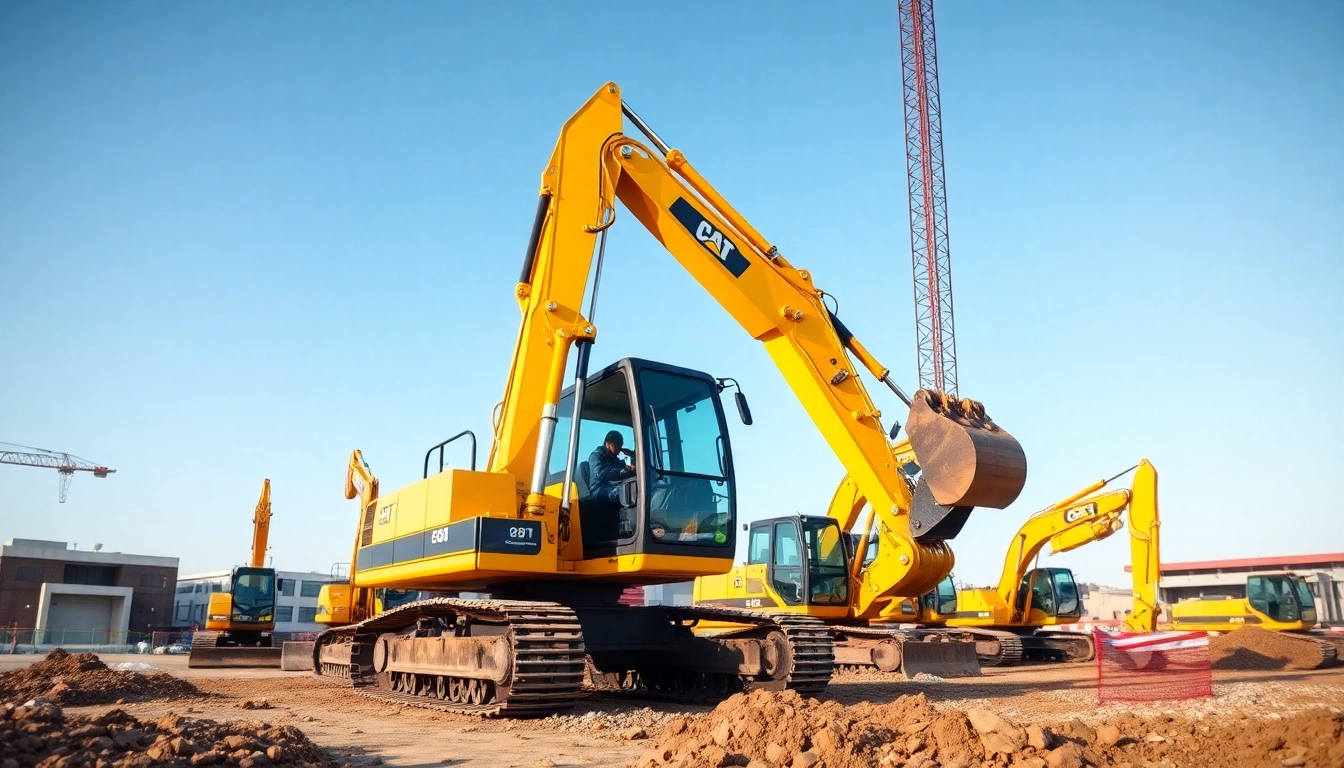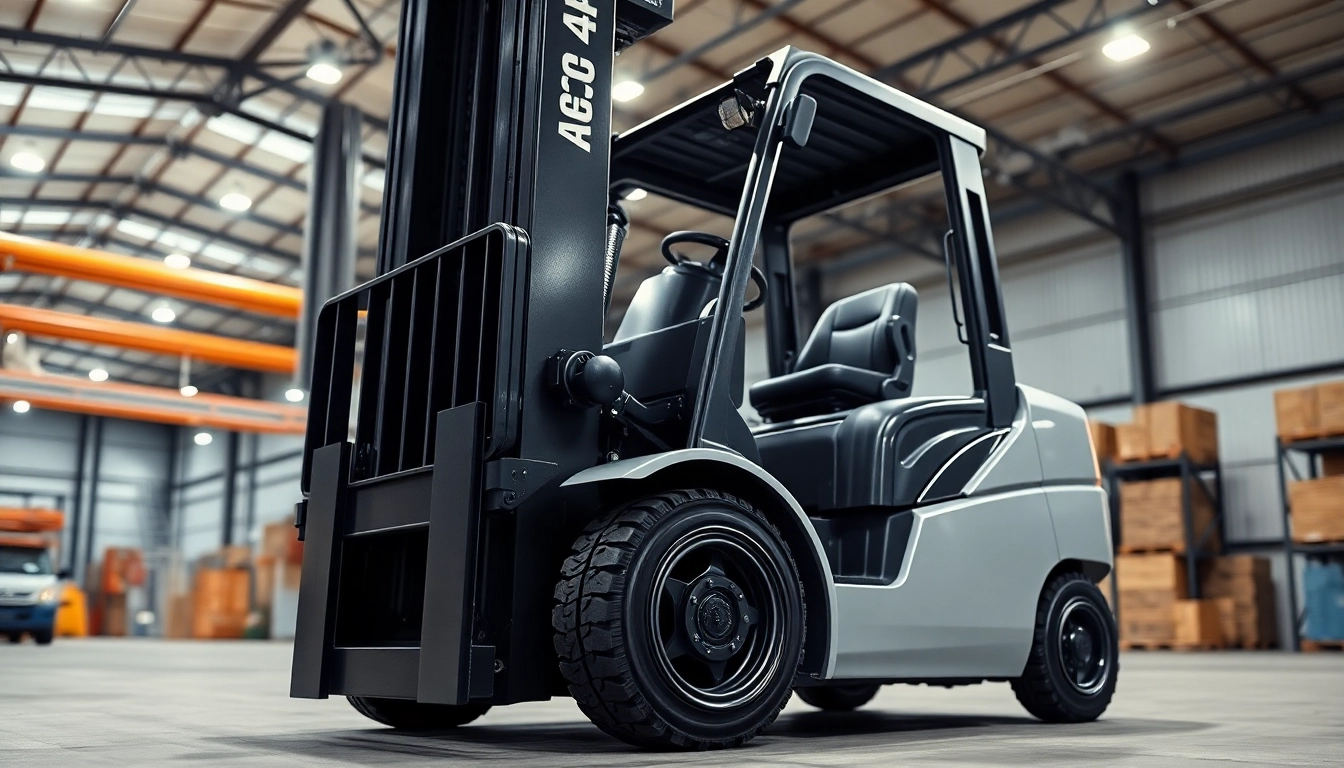Understanding Excavator Rental: Types and Sizes for Every Project
In the evolving landscape of construction and landscaping, excavator rental has become an essential service for a wide array of projects—from small DIY backyard renovations to large-scale commercial developments. As the backbone of earthmoving tasks, excavators provide unparalleled efficiency and versatility. Whether you’re a contractor, a professional builder, or a homeowner tackling a garden overhaul, understanding the nuances of excavator types, sizes, and rental options is crucial to ensuring project success. This comprehensive guide will walk you through the different excavator types, their optimal applications, and how to select the best equipment tailored to your specific needs. For those seeking reliable, cost-effective solutions, exploring options such as excavator rental in the UK can make a significant difference in project delivery and budget management.
Mini vs. Standard Excavators: Which Fits Your Needs?
One of the most foundational decisions when choosing an excavator rental is whether to opt for a mini excavator or a standard (full-sized) model. The distinction primarily lies in size, weight, and operational capacity, each suited to different project scopes and site limitations.
Mini Excavators
Mini excavators, often weighing from as little as 0.8 tonnes up to around 6 tonnes, are characterized by their compact dimensions, lightweight build, and ease of maneuverability. They are particularly ideal for:
- Accessing tight or confined spaces such as narrow alleys, urban construction sites, or renovations inside existing buildings.
- Performing precise landscaping, small-scale trenching, or utility work where minimal disturbance is desired.
- Projects that require frequent repositioning or work in restricted areas where larger equipment cannot operate efficiently.
Organizations like Brandon Hire Station highlight the user-friendly nature of mini diggers, emphasizing their suitability for homeowners and small contractors alike, with rental prices starting from competitive rates that make them an accessible choice.
Standard Excavators
Standard excavators tend to weigh between 10 and 50 tonnes, equipped with more powerful engines and larger buckets. They excel in extensive earthmoving tasks, such as:
- Large-scale excavation projects, like foundations for commercial buildings or road construction.
- Heavy lifting and demolition work that demands greater power and stability.
- Longer operational hours and larger workloads requiring optimal productivity and efficiency.
Providers such as HSS offer a wide range of these models, tailored to meet even the most demanding construction schedules with high-capacity machines.
Track vs. Wheeled Excavators: Advantages and Applications
Another key classification revolves around the undercarriage system—whether the excavator is tracked or wheeled. Each type offers distinct advantages based on terrain, stability, and mobility requirements.
Tracked Excavators
Equipped with continuous tracks or caterpillar treads, tracked excavators provide exceptional stability and traction on rough, uneven, or soft terrain. They are ideal for:
- Construction sites with loose soil, mud, or gravel surfaces where wheeled machines might slip or sink.
- Long-duration projects requiring steady operation over extended periods.
- Heavy-duty tasks such as deep excavations, lifting heavy loads, and demolition.
For instance, small tracked models from Boels Rental are well-suited for urban projects where ground conditions may be challenging.
Wheeled Excavators
Wheeled excavators, often mounted on rubber tires, are known for their superior mobility across paved surfaces. They are preferred for:
- Urban construction sites requiring rapid movement between different locations.
- Roadwork and landscaping where transportation ease can save time.
- Indoor or semi-indoor projects with smooth flooring or concrete surfaces.
These models are typically less suited for uneven ground but excel in environments where quick repositioning amplifies productivity.
Popular Sizes and Capabilities for Different Work Sites
Choosing the right excavator size depends heavily on the scope and nature of your project. Here’s a breakdown to help you align equipment capacity with your needs:
Micro and Mini Excavators (0.8T – 3T)
Perfect for small-scale work such as garden landscaping, trenching for utilities, or indoor renovations. Their compact size allows entry into spaces inaccessible to larger machines, with rental options starting from around £100-150 per day in the UK, offering affordability for homeowners and small contractors.
Mid-Size Excavators (3T – 10T)
Versatile workhorses suitable for medium projects—like small commercial developments, pool excavations, or landscaping large gardens. These models strike a balance between power and maneuverability, with rental prices typically ranging from £200-£400 per day depending on specifications.
Large Excavators (10T and above)
Designed for extensive construction projects, infrastructure development, and mining activities. They provide the highest lifting and digging capacities but require sufficient space and operator expertise. Rental costs can go beyond £500 daily, but their efficiency often justifies the investment for large projects.
Choosing the Right Excavator Rental Provider
Factors to Consider: Equipment Quality, Price, and Support
Selecting a reputable rental provider is pivotal. Consider the following elements:
- Equipment Quality: Ensure machinery is modern, regularly maintained, and compliant with safety standards. Reputable providers conduct routine inspections and provide well-prepared units.
- Pricing: While budget constraints are important, the lowest price isn’t always the best. Transparent quotes, inclusive of delivery, setup, and insurance, help avoid hidden costs.
- Support and Customer Service: A dedicated support team can assist with troubleshooting, operator guidance, and emergency repairs, minimizing downtime.
Why Local UK Rental Companies Offer Better Service
Local companies often understand regional regulations, supply chains, and terrain better, providing faster delivery and more personalized support. They can offer flexible rental terms, immediate equipment availability, and on-site technical assistance—factors critical for project continuity.
Additional advantages include tailored advice on choosing the right equipment and addressing specific site challenges, saving time and costs.
How to Compare Excavator Rental Quotes Effectively
When evaluating quotes:
- Compare the total cost, including delivery, fuel, and insurance fees.
- Verify equipment specifications and condition.
- Assess the rental duration and cancellation policies.
- Check for added support services or discounts for long-term rentals.
Request detailed written quotes and ask about potential hidden charges to ensure accurate budgeting.
Step-by-Step Guide to Renting an Excavator
Assessing Your Project Requirements
Begin by thoroughly analyzing your project’s scope. Determine the necessary excavation depth, soil type, site accessibility, and duration. Create a detailed plan that includes equipment specifications, manpower, and site preparation steps.
Booking and Delivery Process Explained
Once your needs are clear, select a trusted supplier and finalize your rental agreement. Most providers will arrange for delivery, setup, and pickup. Confirm delivery times, site access points, and operator requirements if applicable. Opt for companies that offer flexible rental periods to match your project timeline.
Preparing Your Site for Excavator Hire
Clear the area of obstructions, ensure stable ground, and plan for necessary permits or safety measures. Communicate site-specific instructions to the rental company to facilitate smooth delivery and operations.
Best Practices for Operating Excavators Safely and Efficiently
Operator Skills and Safety Equipment
Only trained operators should handle excavators. Proper safety gear—helmets, high-visibility clothing, gloves, and steel-toed boots—are mandatory. Regularly inspect controls, safety features, and attachment connections to prevent accidents.
Maintenance Tips During Rental Period
Keep hydraulic fluids, engine oil, and filters in check. Conduct daily pre-operation inspections, and immediately report any irregularities. Avoid overloading the machine beyond specified capacities, and follow manufacturer guidelines for operation.
Maximizing Productivity and Minimizing Downtime
Plan daily schedules efficiently by batching similar tasks. Maintain clear communication with ground staff, monitor machine performance, and keep spare parts and tools handy. Proper operational techniques reduce wear and tear, prolonging equipment lifespan and ensuring project timelines are met.
Cost, Permits, and Legal Considerations in Excavator Rental
Understanding Rental Pricing and Hidden Fees
Rental costs are typically based on duration, size, and type of excavator. Additional charges may include delivery, fuel, insurance, and operator services. Always request detailed estimates and read rental agreements carefully to identify any hidden fees or penalties for late returns or damages.
Required Permits and Regulatory Compliance in the UK
Construction and excavation activities often necessitate permits, especially in urban areas or protected regions. Check with local authorities regarding noise regulations, working hours, and environmental restrictions. Compliance not only avoids legal penalties but also ensures safety and environmental sustainability.
Insurance and Liability Coverage Options
Proper insurance coverage is essential. Many rental companies include basic coverage, but additional protection against damages or theft can be purchased. Clarify liability coverage limits and ensure coverage extends to all operators involved.









